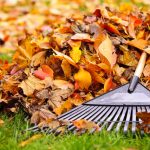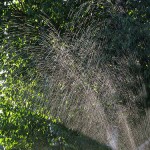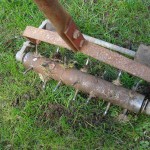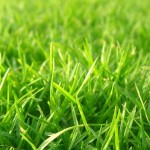
How to prepare your lawn for the winter
Most southern lawns are amazingly resilient and hardy against the hottest, driest weeks of the summer. Warm-season grasses, which make up the vast majority of lawns in New Orleans, have their highest growth rates during the summer. Whereas growth typically slows down in the fall.
I know what you’re thinking, ‘Oh great, the mowing season is over and I can just let my lawn coast until next year.’
Think again.
Fall is the time of year when homeowners begin preparing their lawns and gardens for winter. If you enjoy that lush, green lawn in the spring then be aware that there should be a few weekend tasks on your to-do list to prepare your lawn for a cooler winter.
Check out these easy-to-follow tips below for efficient fall lawn care and maintenance.
1. Rake the leaves
Photo: Flickr / John Howell
Leaving wet, soggy leaves on your lawn is probably one of the worst things you can do to your lawn during the fall. If the layer of leaves grows too thick it can suffocate the grass and stunt future growth. Additionally, prolonged moisture on the lawn is an open invite for fungal disease, which is difficult to identify and treat.
Regularly removing the leaves from the lawn is the way to go. Not only does it contribute to healthy growth but is also an easier burden on your back.
Pro tip: Use fallen leaves to your advantage. Did you know that fallen leaves are an excellent source of nitrogen for your lawn? Either grinding up the leaves into tiny pieces and recycling them back into the lawn or adding them to your compost pile are a couple great ways to capitalize on free, natural fertilizer.
2. “Winterize” your irrigation system
Depending on your grass type (and this year’s weather) you may need to continue watering as usual. However, most warm-season grasses’ growth rates slow way down in the fall.
During the summer, lawns need about an 1 to 1 ½ inches of water per week. Once fall sets in and winter is approaching, lawns need significantly less water to thrive. The key here is to incrementally cut back on the amount of water that you’re lawn is receiving until the first frost. After the first frost feel free to cut the irrigation system all together.
Tips for winterizing your sprinkler system can be found here.
3. Aeration, overseeding, and topdressing
Warm-season lawns should be aerated and overseeded in the early spring or late fall. Experts go back and forth on which is better for your lawn. The point is to do this while the lawn isn’t experiencing peak growth.
Aeration is a process that involves perforating the lawn with tiny holes using a tool called a core aerator. The core aerator removes small “plugs” of grass and soil and opens the lawn up in order to invite ample amounts of air, water, and sunlight to the root system. The soil in lawns can become compacted, restricting air, water, and sunlight. So, it’s a good idea to do this once every year or two.
Overseeding and topdressing are two great supplements to aeration. Believe it or not, grass does age with time and needs to be renewed with fresh seed. And amending topdressing allows the soil to maintain adequate amounts of nutrients that are essential for a healthy lawn.
4. Fertilize and feed
I’m going to be as straightforward as possible here: you are wasting your time if you choose to fertilize and feed a lawn during the fall season this far down south. Save the time and money for the springtime and early summer. Warm-season grass is preparing for winter dormancy and thus doesn’t need to be bothered with fertilization at this time.
5. Mow and edge
Photo: Flickr / Don Buciak II
Continue to mow the lawn as needed. Although the grass isn’t growing nearly as fast as it does during the summer the lawn still needs to be mowed frequently. Remember the golden rule, never to remove more than ⅓ of the grass blade at a time.
Unfortunately, this might mean continuing to mow the lawn on a weekly basis if the grass is still growing at a rate that would mean cutting away more than ⅓ of the grass blade at a time.
The good news is that the mowing frequently allows you to the recycle the grass clippings back into the lawn. Plus because the grass isn’t as long it won’t be as much of a chore to knock out.
Have more questions about lawn care? Visit our New Orleans lawn care page or share your thoughts in the comments section below.







